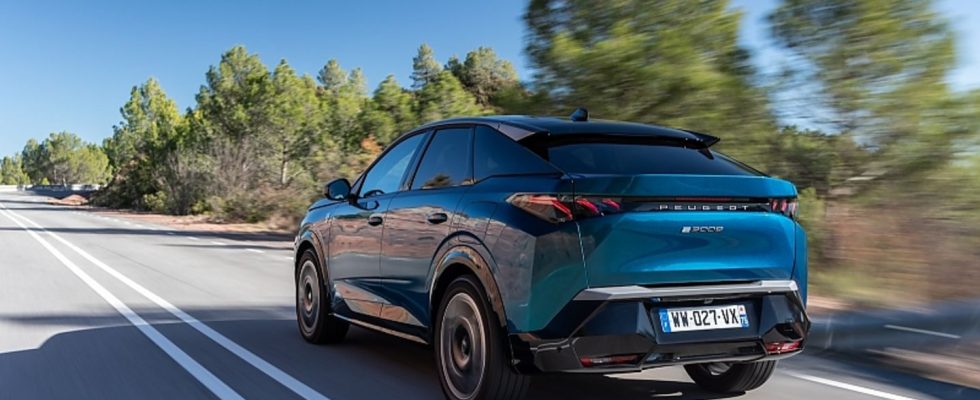Driving report: Peugeot e-3008
New challenges
Peugeot e-3008
© press-inform – the press office
The new Peugeot 3008 has become stylish and, if desired, also electric. The third generation of the Frenchman shows a crossover that is well worth seeing and the new direction of the busy Stellantis brand with the lion’s head.
One of the most important advances in the 4.54 meter long 3008 is the first use of the new STLA medium platform, which will be used by all Stellantis electric models with lengths between four and 4.50 meters in the future. The customer can choose between two battery sizes with 73 and 98 kWh as well as the three power levels with 213, 231 (front-wheel drive each) and the 326 hp all-wheel drive model, which should achieve ranges between 525 and 700 kilometers. The new technology also enables somewhat faster charging, as the maximum output at the charging station has now increased from the tranquil 100 to at least 160 kilowatts. If you don’t want an electric drive – the 3008 is also available with a small 1.2 liter petrol engine and as a plug-in hybrid with a 1.6 liter four-cylinder.
Just as new as the drive and battery technology is the increasingly high-quality interior with a cockpit, which, depending on the equipment, is dominated by a 21-inch panoramic screen. In the center of the dashboard is a touch panel with customizable shortcut keys that are easy to use and eliminate the need to search for the most frequently used functions in the center screen menus. The steering wheel also has a new design, although the reduced diameter and flattened shape have been retained. The right side of the steering wheel now houses the transmission shift lever, which has been moved out of the area between the front seats to create more storage space. The drive mode selector switch (Eco/Normal/Sport) also has a new shape and a more modern look. The overall workmanship appears to be solid, with various soft-touch materials being combined with solid plastic surfaces depending on the equipment level. The space in the second row of seats offers adequate legroom and people up to 1.80 meters tall have enough space for their hairstyle. However, rear visibility is poor due to the narrow rear window and wide C-pillars. Depending on the drive, the trunk volume is between 470 and 520 liters.
The 157 kW / 213 hp front-wheel drive engine of the Peugeot e-3008 is a solid basis for the new electric version, as the 343 Nm of maximum torque available from a standstill is good for the 2.1-tonne vehicle. The acceleration performance is acceptable for a family car (7.8 seconds from 0 to 100 km/h) and the standard consumption is also okay at 16.8 kWh per 100 kilometers, but a maximum speed of 170 km/h is not much to have reserves on the to have highway. The steering is quite precise and the small steering wheel contributes to a sportier driving experience. However, rolling movements are noticeable when cornering quickly, as the e-3008 has been set up to be particularly comfortable. The braking effect is less pleasing than the chassis set-up with the good compromise between comfortable and firm. Braking is not pleasant because the left pedal barely decelerates in the first third of the way and feels too spongy. Christophe Patois: “In order to promote recuperation and reduce energy consumption, we cannot brake much mechanically at the beginning of the pedal movement. It’s a compromise; but I admit it’s not the most pleasant feeling.”
True, because not only does it create an unsafe driving feeling, but it also makes driving less fluid: you tend to press the pedal too hard because of the lack of initial deceleration, which causes the front of the vehicle to dip a little, and then you release the brake when the deceleration becomes too great and the nose of the vehicle lifts. The driver has a choice between three levels of recuperation, which can be adjusted using the steering wheel-mounted paddle shifters, but there is no “one-pedal function” with maximum recuperation and crawling functions.
The new lion chic has its price, because 48,160 euros for this entry-level electric model is definitely impressive for a Peugeot. The all-too-small 1.2-liter petrol engine with 96 kW / 130 hp starts at 38,660 euros and from next summer the range will be expanded to include a 195 hp plug-in hybrid with 143 kW / 195 hp. By 2025, Peugeot will bring the e-3008 4×4 and the extended range version (98 kWh battery / 700 kilometers) onto the market, which should cost just under 60,000 euros.

